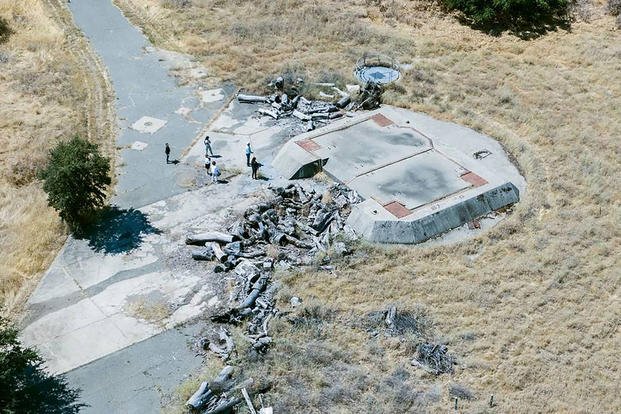

SACRAMENTO, Calif. — The most recent data collected by the U.S. Army Corps of Engineers at the Titan-1 missile silo site in Placer County found that despite longstanding concerns, new soil vapor monitoring probes closest to homes in the Sun City Lincoln Hills development do not show signs of trichloroethylene, or TCE, a chemical that can cause health problems.
The monitoring probes did, however, measure low levels of benzene — a chemical linked to cancer — at the wells nearest to the homes. Officials say the source of the benzene was not immediately clear, but that the amounts found do not appear to be dangerous.
Titan-1 missiles were a Cold War-era project. The Lincoln site, one of three in California, took up dozens of acres in a then-remote part of Lincoln — with miles of tunnels, three 160-foot-deep silos and other operation and housing buried underground.
The silos leaked a chemical, TCE, after it was used to clean the site during its three years of operation, and groundwater and soil vapors holding the toxic contaminant have spread in the direction of Sun City Lincoln Hills, a community for people 55 years and older with roughly 11,000 residents.
As the Army Corps conducts tests to determine how to go about addressing TCE contamination, they are updating the public with findings at quarterly Restoration Advisory Board meetings.
At one of those meetings last Thursday evening, the board presented early findings from the most recent data collected by the Army Corps, according to a Restoration Advisory Board news release. These findings were preliminary, as a final report of the most recent data has not yet been released to the public.
“To do these reports they have to go through a lot of internal review and comments,” Ranny Eckstrom, co-chair of the board, said in an interview.
Eckstrom said that the final report should be released in the next couple of weeks, after the federal Comprehensive Environmental Response, Compensation, and Liability Act process that the Army Corps has to follow is completed.
“They did disclose, because they didn’t want to keep it hidden or fuel conspiracies, that they did find some benzene. Benzene is common,” Eckstrom said.
The preliminary findings were from newly installed soil vapor monitoring probes that are closest to Sun City homes. While other probes around the site have been there for years, these were added to help define how far the soil vapor plume extends away from the site.
Probes in the center of the known soil vapor and groundwater plumes have shown the most concentrated levels of TCE. Sun City homes remain outside the edge of the estimated plume.
Benzene was found in two soil vapor probes near Sun City homes and three near the St. Joseph Catholic Church that neighbors the site, according to the advisory board. No other data was released about groundwater levels of TCE or benzene.
Eckstrom, a retired engineer, added that the benzene is most likely not from military activity at the site because that occurred so long ago, and a toxicologist at the meeting said that the measured levels of benzene would be no more dangerous than filling up one’s car at a gas station.
The Army Corps formed the Restoration Advisory Board in response to a community survey, noting that residents knew less about the restoration efforts than they had thought.
Eckstrom said that the board is communicating updates and the history of the site to the neighborhood and trying to put findings and processes in plain language that is more understandable than official Army Corps documents and reports.
Along with hearing and discussing resident concerns, the restoration board, which is a group of 11 volunteer residents, provides oversight of the Army Corps and their processes, Eckstrom said.
“We can look very critically at what they can and are able to do within the context of the law.”
In the early 2000s, cleanup efforts were piloted by the Army Corps, using extraction trenches and wells that removed 10 pounds of TCE from groundwater. Efforts were paused in 2009 when the Army Corps began questioning if the county should be in charge of cleanup because of their ownership and uses of the site, The Sacramento Bee reported in 2011.
Between 2000 and 2022, the TCE-contaminated groundwater plume spread at an average rate of 87 inches per year, moving a total of 150 feet towards Sun City Lincoln Hills.
Dispelling fears and misunderstandings about the dangers of the site is also an important role of the board, Eckstrom added. They have been working to meet with real estate agents and create a fact sheet with meeting and restoration schedules.
“One of the things that the Army Corps could do better is communication. We’re part of that,” Eckstrom said. “I understand the fear, but I don’t think the level of fear has been warranted.”
____
©2024 The Sacramento Bee. Visit at sacbee.com. Distributed by Tribune Content Agency, LLC.
© Copyright 2024 Sacramento Bee. All rights reserved. This material may not be published, broadcast, rewritten or redistributed.
